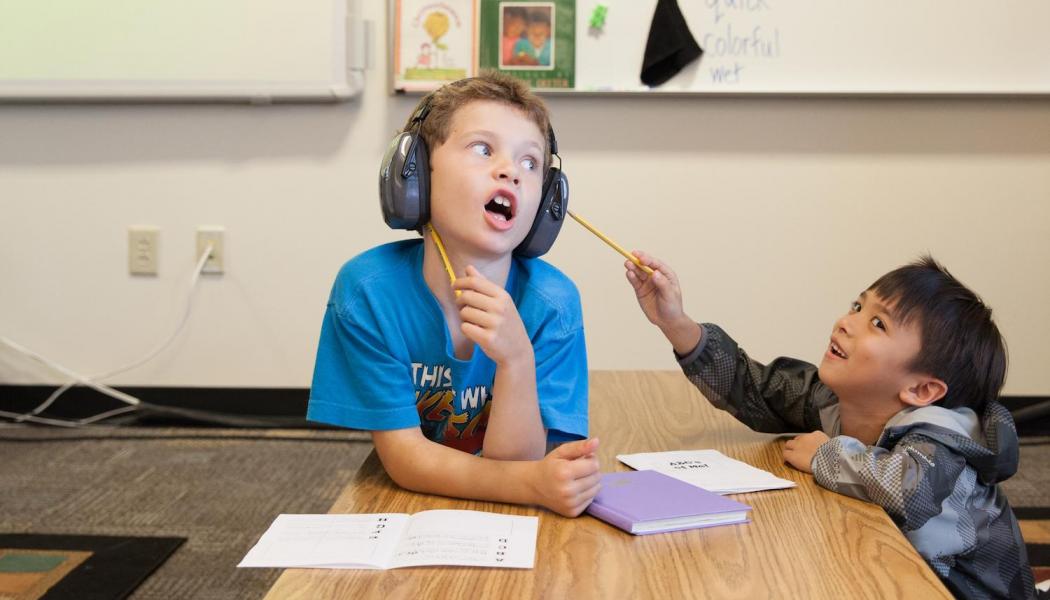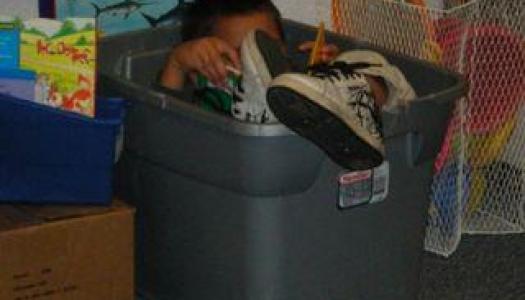10 Practical Suggestions for Challenging Behaviors

"If you haven't had trouble in your life yet, I'm glad. But know that it's coming." These are words the pastor at my church periodically shares, and I think they apply to teachers as well. Anyone who has taught for more than a year, make that a month, has probably encountered challenging behavior from students.
Recently, a young teacher shared with me that he gets a pain in the pit of his stomach when he thinks about a few students in class who seem poised and ready to sabotage lessons he has spent much time planning just for them. He admits that most of the students he sees in the course of a day are wonderful, but he feels he sometimes overlooks them because of the attention he has to pour into solving behavior problems. With regret, he notes that he didn't spend much time with his wife last weekend or meet his friends at a local restaurant to catch up. Instead, he spent his time toiling over lesson plans, determined to incorporate just the right mix of multimedia, collaboration, and activities. "Often," he says, "my lesson doesn't get off the ground because a couple of kids get into horseplay or start a verbal or physical fight." What is a well-intentioned, creative, reflective, and eager-to-make-a-difference teacher like this one supposed to do?
According to Carol Ann Tomlinson (2012) in her article "One to Grow On/Rising to the Challenge of Challenging Behavior," there are quite a few options to explore. Based on Tomlinson's advice, my young teacher friend is certainly on the right track with designing interesting lessons, but he has to get the students to work as hard as he does. Participation coupled with engagement is key. Even the most reluctant student can shine if he has the opportunity to share about a topic near and dear to his heart. As Tomlinson observes, "an engaging, carefully planned lesson that offers all students an opportunity to contribute, and to succeed, can disarm a kid who comes to class with negative expectations."
Another suggestion that Tomlinson (2012) offers is to show respect to all students. Over the years, I have met more than one teacher whose classroom rules include that one very powerful word: R-E-S-P-E-C-T. The work of the Sisters in Daily 5 certainly supports a climate of respect. Like the pastor of my church, the Sisters realize that trouble may be lurking just around the corner, and they are ready, really ready, for it. The Daily Five (2006) takes into account the fact that not every student is going to embrace I-charts with equal zeal. For this reason, the Sisters incorporate this deliberate structure: a positive model of the target behavior, followed by a negative model, and sealed with the positive model performed by the very child who delivered that negative one, most likely with a good deal of delight! Through modeling, the Daily 5 shows what respect looks like and sounds like, a lesson that will serve children well through every routine of the school day.
Tomlinson (2012) advises teachers to find the good in all students, particularly those who disarm us with negative words and behaviors. Of course, the only way to unearth students' positive qualities is to get to know each learner. In Daily 5 (2006), the very clear and loud expectation is that each child is capable of success. Which student doesn't want to hear positive messages from his teacher and his classmates? In reality, for some children, the only positive messages they receive resonate from within the four corners of the classroom. Every boy and girl in the class has redeeming qualities, some hidden deep within as a result of more pain than any child should experience, but they are there. As teachers, it is our job to get past the pain; we can't always take it away from our students, but we can show them that there are beautiful things in life, too, like talking with classmates about ideas, exploring interesting books, conferring with a caring adult about their responses to reading, taking pride in their work, and developing their talents.
Every one of us has a story, and our students are no different. I know that my teacher friend has tried to learn those sometimes convoluted narratives of his students' lives so that he can understand them better. When we look closely, we may realize that our students' negative behaviors have very little to do with us. Instead, our learners are lashing out at areas of life totally beyond their control, and ours as well. As Tomlinson (2012) observes, "Understanding what's behind destructive behavior doesn't result in an instant cure, but it does help teachers work toward solving problems rather than merely addressing symptoms."
Teachers are often sensitive people and sometimes find it difficult not to take students' outbursts personally. But Tomlinson (2012) wisely advises teachers to adopt the opposite stance in her article. The Sisters (2006) advocate this same composure when dealing with those barometer children who push the limits in the classroom. In assisting children who demonstrate difficulty with the desired Daily 5 behaviors, the Sisters show that the focus is on giving more time and training to the student; it does not help for the teacher to take the child's actions personally because the child's misbehavior is often a raw and misplaced reaction to a difficult home life.
To reach our most challenging students, Tomlinson (2012) recommends that teachers embrace the role of "warm demander." If we try to remember hard enough, most of us can probably name a teacher we had who fell into this category. A warm demander is a teacher who is kind and caring but also has clear expectations along with the belief that each learner can meet them. From studying the Sisters' videotaped forays into literacy classrooms, I can tell that they are warm demanders, clear about what they expect, firm, and patient in how they encourage students to meet those expectations.
Teaching students to be responsible and independent is at the heart of Daily 5. Teachers have the valuable opportunity to be keen observers of all of our students' behaviors?social and academic. This vantage point of classroom observer allows us to see which children struggle with getting along with their peers and allows us to do some coaching in this important area. In "One to Grow On/Rising to the Challenge of Challenging Behavior," Tomlinson (2012) demonstrates how helping a student create a plan to deal with his own challenging behavior can improve interactions with peers as well as increase self-efficacy.
Whether you are a new teacher or a veteran, know that trouble in the form of challenging behavior is part and parcel of the job. But you are not alone, educators like the Sisters and Carol Ann Tomlinson have grappled with it as well and help us to see the light on the other side. Yes, trouble might be coming, but we can handle it.
References
Boushey, G., & Moser, J. (2006). The Daily 5. Portland, ME: Stenhouse.
Tomlinson, C. A. (2012, October). One to grow on/Rising to the challenge of challenging behavior. Educational Leadership 88-89. Alexandria, VA: ASCD.







